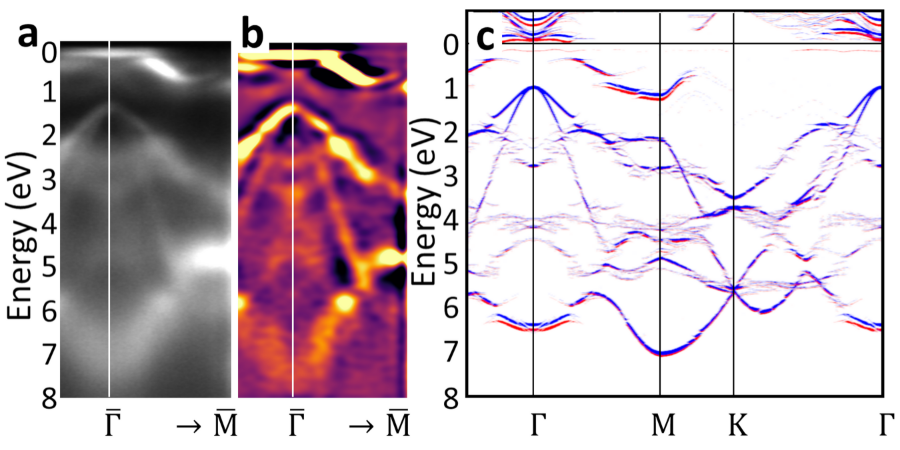
 Web Content Display
Web Content Display
SOLARIS centre
 Web Content Display
Web Content Display
 Web Content Display
Web Content Display
Electronic structure of defected 1T-TaS2.
Researchers from the Faculty of Physics and Applied Informatics of Lodz University in cooperation with URANOS scientists investigated the electronic structure of 1T-TaS2. High-resolution ARPES measurements were performed at Solaris as part of a comprehensive study of the influence of structural defects on the electronic properties of bulk 1T-TaS2.
1T-TaS2 has a rich range of unique properties and phenomena such as Mott phase transition, charge density waves, a quantum spin liquid, chirality, and resistive switching. Besides, the material is very sensitive to pressure, voltage pulses, doping, or optical laser pulses, which in turn allows controlling and tunning the properties and phase transitions of the 1T-TaS2.
The influence of intrinsic defects of 1T-TaS2 on electronic properties is strong, however it has not been comprehensively studied yet. Scientists have studied this influence by a complex approach of scanning tunneling microscopy and spectroscopy (STM, STS), high-resolution angle-resolved photoelectron spectroscopy (ARPES) with synchrotron beam, and density functional theory (DFT).
ARPES investigations allowed obtaining information about the electronic structure of 1T-TaS2 which was supported by density functional theory (DFT) simulations. Researchers used DFT and DFT+U (with inclusion of Hubbard term) to calculate the properties of defect-free 1T-TaS2, sulfur vacancies, and their substitution by oxygen atoms. Unfolded band structure calculations for the defect-free system are compared to ARPES data, showing good agreement (see Fig. 1). Even bands located as far as 8 eV below the Fermi level are reproduced with high fidelity, despite a slight shift toward the Fermi level in the calculation. The band gaps along the Γ ̅-M ̅ the direction in the energy range below 1.3 eV below the Fermi level is also well reproduced both in experimental and calculated data. These gaps are related to the periodic lattice distortion (PLD) formation and Coulomb interactions between carriers in 1T-TaS2.
Based on calculations of defects in 1T-TaS2, reasearchers believe that the local metallic behavior observed experimentally results from sulfur vacancies. They also show the electronic properties heterogeneity for different sulfur sites substituted by oxygen i.e., either semiconducting properties with preserved magnetization or metallic behavior with considerably hindered effective magnetization. These results clearly show that accounting for the presence of defects in 1T-TaS2 is going to be crucial both for subsequent fundamental studies of this material and for further device design.

Figure 1 (a) ARPES data measured at 80 K along a line in k space and (b) its second derivative. (c) Unfolded DFT band structure for 1T-TaS2 supercell which includes periodic lattice distortion which is characteristic for 1T-TaS2. Spin up and spin down indicated using red and blue respectively.
Written by: Iaroslav Lutsyk
Link to the publication:
Lutsyk, I., Szalowski, K., Krukowski P., et al. Influence of structural defects on charge density waves in 1T-TaS2. Nano Research (2023). doi.org/10.1007/s12274-023-5876-7
